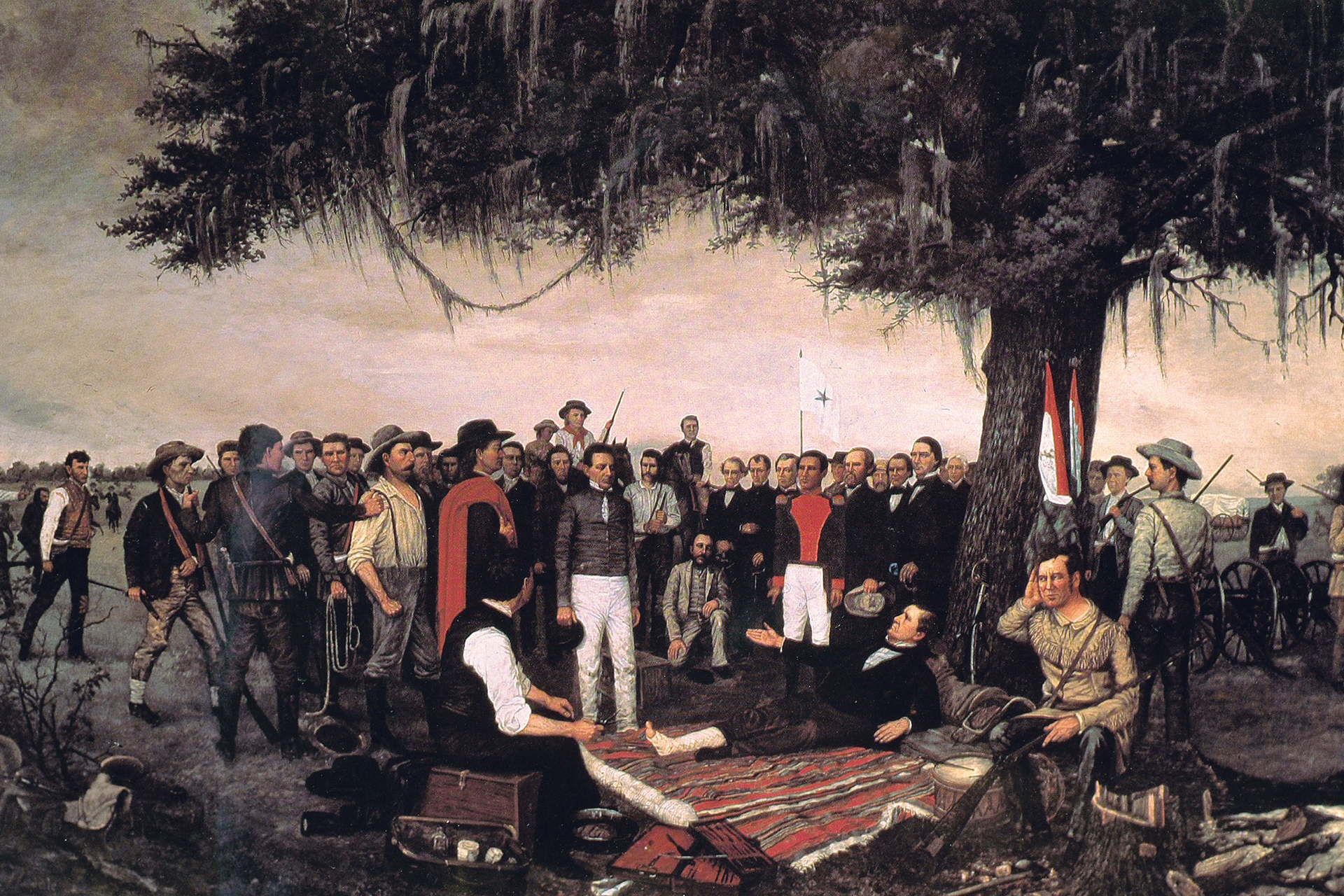
The Battle of San Jacinto
The Battle of San Jacinto was the final military event of the Texas Revolution. The Commander of the Texas Army, Sam Houston, was in Gonzales when he heard on March 11, 1836, that the Alamo had fallen into the hands of the Mexicans. He believed that he had no other choice but to retreat eastward with his army because Santa Anna was moving swiftly from San Antonio.
Santa Anna’s purpose was to capture the Texas government, destroy any Texan in his path, and capture Sam Houston and the Texas Army. As Houston retreated, his army was growing rapidly, and it bought time for the army to gain experience and to learn military tactics. While Houston was retreating, Colonel James Fannin and his troops were defending Goliad. On March 20, 1836, Colonel Fannin surrendered with the understanding that he and his men would be released to return to the United States, but Santa Anna ordered the execution of these prisoners on Palm Sunday, March 27, 1836.
Sam Houston did not reveal his strategy for the battle to his men but in his speech he said, “Remember the Alamo!” “Remember Goliad!” which became the battle cry for the Texas Army. The Texas Army arrived at the San Jacinto Battlefield on the morning of April 20, 1836.
The topography of the San Jacinto Battlefield played a big part in Texas’s victory. The field was bounded on three sides by water and consisted of open prairie with tall grasses, two miles wide. Houston selected a grove of live oaks for his soldiers so that the trees could provide ideal cover for them.
Santa Anna made camp under the high ground overlooking a marsh about three-fourths of a mile from the Texas camp. There was a low rise that divided the prairie. On Thursday afternoon, April 21, 1836, both sides prepared for the battle. The Texas Army was eager to avenge the deaths at the Alamo and at Goliad. Santa Anna and his men were taking a siesta, and it seemed that no Mexicans were standing sentinel. The rise between the armies helped mask Houston’s army. Houston had a simple battle plan. At four o’clock Houston raised his sword and ordered, “Forward!” Most of the Mexicans were completely surprised. Behind the Mexican lines, chaos and confusion reigned. Houston’s war cries were, “Remember the Alamo!” “Remember Goliad!” as the Mexican soldiers were crying, “Me no Alamo! Me no Goliad!” claiming they were not at the Alamo or at Goliad. It was a one-sided rout and the Texans had won the battle in just eighteen minutes. The Texans had avenged the deaths at the Alamo and at Goliad and had won freedom from Mexico. Santa Anna disappeared during the battle and search parties were sent out to find him. They discovered him hiding in the grass, dirty and wet and dressed as a common soldier. Santa Anna had taken the clothing from one of his own dead soldiers and put these clothes on top of his military uniform. The search party did not recognize him until his own soldiers addressed him as “El Presidenté!” “El Presidenté!” Santa Anna was taken prisoner and on May 14, 1836, he and the Texas government signed the Treaty of Velasco that stated Santa Anna would be released and returned to Mexico. Santa Anna was never to fight Texas again, but the Mexican government never ratified the treaty because Santa Anna had signed the agreement as a prisoner.
The events of spring 1836 were a defining moment in its formation of the United States. Measured by its results, San Jacinto was one of the decisive battles in world history. The freedom Texas won from Mexico at San Jacinto led eventually to its annexation by the United States. The annexation led to the Mexican-American War, resulting in the acquisition by the United States of the states of Texas, New Mexico, Arizona, Nevada, California, Utah, and parts of Colorado, Wyoming, Kansas, and Oklahoma. Almost one-third of the present area of the American nation, nearly a million square miles of territory, changed sovereignty.
